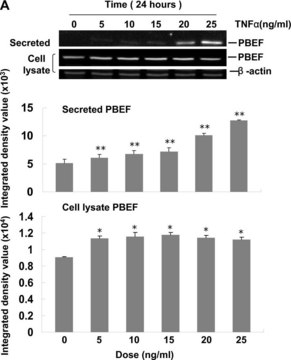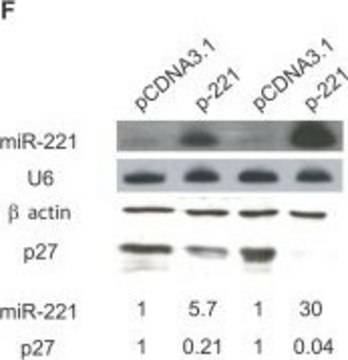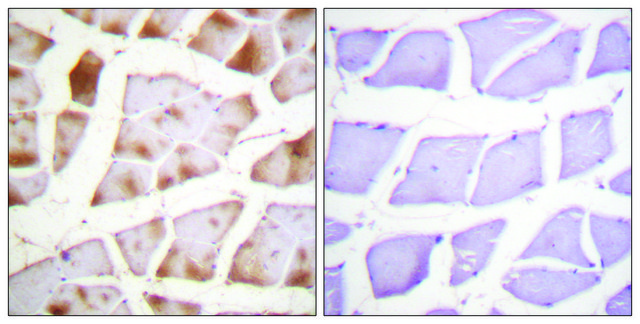AB3150
Anti-β-Actin (ACTB) Antibody
CHEMICON®, rabbit polyclonal
Synonym(s):
32 kDa Fragment of beta-Actin
About This Item
Recommended Products
Product Name
Anti-Fractin Antibody, CT, serum, Chemicon®
biological source
rabbit
Quality Level
antibody form
serum
antibody product type
primary antibodies
clone
polyclonal
species reactivity
human, rat, mouse
manufacturer/tradename
Chemicon®
technique(s)
immunocytochemistry: suitable
immunohistochemistry: suitable (paraffin)
western blot: suitable
NCBI accession no.
UniProt accession no.
shipped in
dry ice
target post-translational modification
unmodified
General description
Specificity
Immunogen
Application
Western Blot: 1:1000-1:4000 for incubation overnight at 4°C. Recommended antibody dilution buffer: TBS with 3% BSA and 0.05% Tween 20, pH 7.4
Optimal working dilutions must be determined by end user.
Physical form
Storage and Stability
Analysis Note
POSITIVE CONTROL: Staurosporin treated neuronal cultures.
Legal Information
Not finding the right product?
Try our Product Selector Tool.
recommended
Storage Class
10 - Combustible liquids
wgk_germany
WGK 1
flash_point_f
Not applicable
flash_point_c
Not applicable
Certificates of Analysis (COA)
Search for Certificates of Analysis (COA) by entering the products Lot/Batch Number. Lot and Batch Numbers can be found on a product’s label following the words ‘Lot’ or ‘Batch’.
Already Own This Product?
Find documentation for the products that you have recently purchased in the Document Library.
Our team of scientists has experience in all areas of research including Life Science, Material Science, Chemical Synthesis, Chromatography, Analytical and many others.
Contact Technical Service








